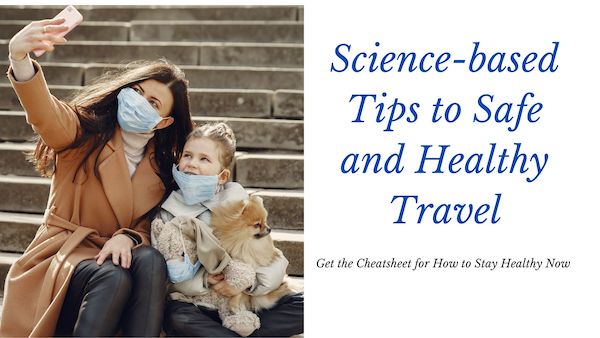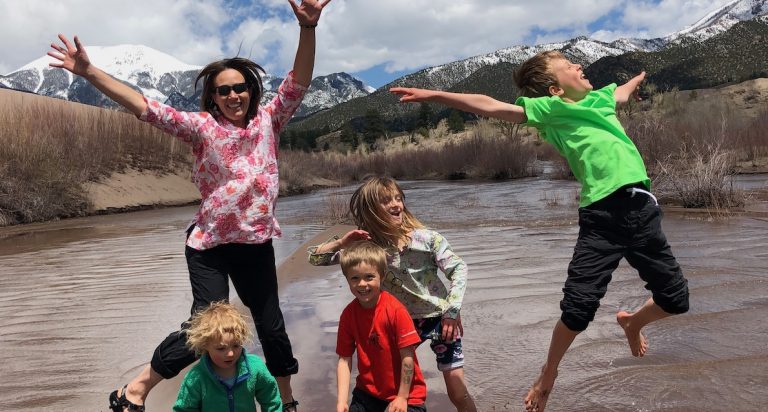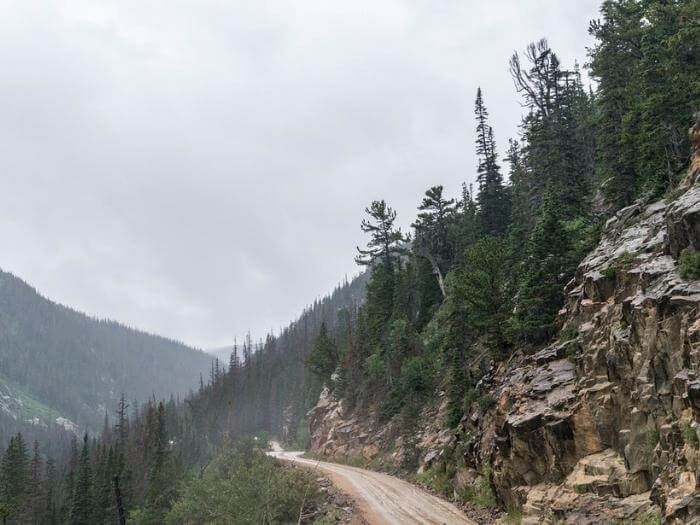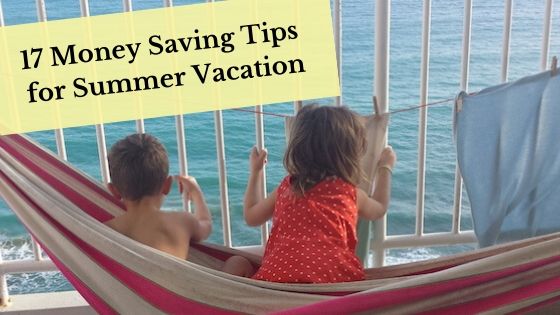Secrets for Safe and Healthy Family Travel (Pandemic Travel Tips)
NOTE*** The content on this page may contain affiliate links, we may make a commission. And, as an Amazon Associate, we earn from qualifying purchases. More information: disclosure page.
Since the outbreak of the coronavirus pandemic, everybody has been hyper-vigilant about staying healthy and safe.
If you have been trying to look at the information out there about spreading germs like COVID19, it can be confusing and overwhelming. So, I tried to boil it down to just a few actionable tips that will make the biggest difference for your family.
I have created this resource for you by summarizing information by the experts on how to travel during a pandemic.
So, when you are ready and feel comfortable to start traveling, you will know how to keep your family safe and healthy.
To get the latest information and travel recommendations for the US and other countries check the information posted at the Centers for Disease Control and Prevention (CDC) and the World Health Organization (WHO).
Spoiler alert: RV travel is the most popular way to travel because it is one of the safest. Many people who don’t own RVs are renting for the first time. The sharing economy (like Outdoorsy or RVShare) is the best and cheapest way to rent one right now. Make sure to use this $50 discount on your fist rental at Outdoorsy.
What You Need to Know for Safe and Healthy Travel
The basic guidelines for staying healthy and reducing your exposure to germs apply to the common cold, flu, and COVID-19. I will list out what to do and then I’ll give you some more information.
One concern has been if you can actually get sick from someone that is positive for COVID-19 but not feeling ill. For me, this is a point that has been really weird about the pandemic. It seems to make us all suspicious of each other. The good news is that we may not need to be too worried.
Dr. Maria Van Kerkhove, infectious disease epidemiologist and lead for COVID-19 at the W.H.O., said, “It still appears to be rare that an asymptomatic individual actually transmits onward.”
“We have a number of reports from countries who are doing very detailed contact tracing,” she said. “They are following asymptomatic cases, they are following contacts, and they are not finding secondary transmission onward. It’s very rare. Much of that is not published in the literature.”
Dr. Maria Van Kerkhove,
So what are the most important things to remember? This a quick outline and then I will cover your questions like, is driving safe? Should I take a road trip? Where should I sleep? Are restaurants safe? You have likely heard the basics from the experts but it is worth pointing out again.
- Wear a mask
- Avoid touching your face, mouth, nose, and eyes (see the video below)
- Stay away from crowds, especially where people are singing or shouting
- Stay 6 feet away or more from others, preferably in open outdoor air.
- Wash your hands frequently with lots of suds for 20 seconds
- Use 70% alcohol-based sanitizer when washing is not available
- Clean surfaces with sanitizer
- Stay rested to keep your immune system strong
- Practice healthy lifestyle habits – eat nutritious food, exercise and stay positive
Does Social Distancing and Wearing a Mask Actually Work?
A new study funded by the World Health Organization and published in The Lancet showed that staying 6 feet (the farther the better) and wearing a mask makes a big difference.
For the general public, evidence shows that physical distancing of more than 1 m is highly effective and that face masks are associated with protection, even in non-health-care settings, with either disposable surgical masks or reusable 12–16-layer cotton ones, although much of this evidence was on mask use within households and among contacts of cases. “
Read the Study in the Lancet Here
So science is starting to prove you can reduce your risk of contracting COVID-19 and other respiratory diseases with a combination of hand washing, social distancing, multi-layer or surgical face masks, and eye protection. Furthermore, your risk is lowered even more when everyone around you is doing the same thing.
The most important point about handwashing is that you do it properly. Get your hands wet and then create lots of bubbles while scrubbing your hands. Teach your kids to wash the tops, bottoms, insides and outsides of palms, and each and every finger.
A virus is actually a bunch of DNA wrapped in a fatty coating. The soap strips away the coating to expose the fragile DNA. The scrubbing breaks it all up and the water washes the germs away.
Here is an incredibly popular (12M views) and interesting episode of Mark Rober’s science project. Watch as he shows how germs are transferred through handshaking and touching objects. This is interesting to kids too, so gather around.
Takeaway: Yes, masks work but staying very far away from people in open-air works even better. What I take from all of this is that outside activities such as visiting National Parks and green spaces are a safe vacation spots. Still, though, wash your hands often.
Is it safer to fly or drive during the pandemic?
The first question is will you drive, fly or use another method of transportation? The experts have all weighed in and I will give you the information that I have found on this. Ultimately, you will need to decide how you would like to travel.
Is it safe to fly yet?
Airline travel is down 95% from what it was in February 2020. The CDC still discourages flying.
US State Department has issued a Global Level 4 Health Advisory Basically, they said that Americans should avoid traveling outside the country.
In addition, domestic air travel is also strongly discouraged.
However, airlines, anxious to get passengers onboard, are doing everything they can to guarantee your health and safety.
Dr. Henry Wu, a professor of infectious disease medicine at Emory University agreed that air travel is not advised. However, if you do have to fly, the air in the plane is filtered. In an interview with NPR he said:
“Air circulation systems on planes are quite good. They have high-efficiency particulate air (HEPA) filters and high rates of air exchange,” says Wu. “But that still doesn’t protect you from what is happening immediately around you.”
Dr. Henry Wu
Planes are designed with High-Efficiency Particulate Air (HEPA) filters that remove 99.9% of airborne viruses and bacteria. Recirculated air and outside fresh air are mixed so that the air inside the cabin is renewed every 3 minutes.
Many airlines have implemented intensive cleaning and sanitizing protocols to go beyond CDC recommendations. For example, United Airlines has gone as far as working with Clorox© company to create United CleanPlus℠ to define their cleaning and disinfection procedures.
Given the intense cleaning procedures and the requirements for masks, experts vary in their recommendations about the health and safety of flying during the pandemic. One group of doctors rated flying anywhere from low to high-risk. The highest risk comes from being in close quarters at the airport and on the plane to people from all over the world.
Is Driving a Safer Way to Travel?
A road trip is also generally safe if you take precautions to avoid being near others and keeping the germs on your hands to a minimum. You will be in a car with your immediate family, stopping only to get gas or go to the bathroom.
Even bathroom breaks can be minimized and the risk can be reduced through wearing a mask and hand washing. (I travel with a portable potty seat for the kids or let the boys water the trees in the forest.)
When you are driving you can choose how much exposure to other people you would like to have. You decide whether to stop for souvenirs or not. At restaurants or to eat picnic lunch, or not.
One thing to keep in mind is if you do get sick while on the road. Web MD points out “First off, what if you get sick while on the road, from coronavirus or something else? It’s not fair to tax already-burdened medical facilities in more rural areas”
In the United States, during the COVID-19 pandemic, each state has different recommendations and orders for travel and business operations. You should check on the orders related to each state and county that you will be traveling through and for your destination. Here is a good summary of each state’s reopening orders.
Note: Some states may require you to be tested for COVID-19 before entering the state. Recently we drove west from Colorado to Idaho, while not required, we did have a test done. We were able to get a test at the local hospital for COVID antibodies.
A sure way to self-isolate is to travel in an RV. You have your own bedroom bathroom and kitchen onboard. This is likely the most popular way to travel this summer. (I’ll talk more about this later in this post).
Fool-Proof Ways Stay Safe on a Road Trip
Taking shorter trips close to home is advisable and may even be required by law. Road trips are perfect because you can choose how far to go and when to stop. If you decide to drive for a vacation and take a road trip you can take measures to reduce your risk on the road (and the risk you pose to others).
Lawrence Gostin, director of the O’Neill Institute for National and Global Health Law at Georgetown University, says the key to staying safe is taking measures like wearing a mask and carrying hand sanitizer when in public spaces.
These are the best recommendations for staying safe based on what the scientists are saying:
- Wear a mask
- Stay 6 feet away from others, preferably in open outdoor air.
- Wash your hands well and frequently
- Use 70% alcohol-based sanitizer when washing is not available
- Clean with sanitizer
- Keep sanitizing cleaning wipes and hand sanitizer in your car.
- Keep yourself as healthy as possible for a strong immune system
You can keep a spray bottle of soapy water or foaming hand soap in the car. When you stop, wash your and the kids’ hands with a little soap and rinse with a water bottle. The next best thing is using sanitizer. Here is a great video by Ted-Ed for the kids about washing hands.
You can make your own sanitizer for the road with at least 70% alcohol or 10% bleach solution. Chlorox has a handy tool to show you exactly how to mix a bleach sanitizing solution here. You can add this to a small spray bottle and use it anywhere. Note that the surface must stay wet for 6 minutes.
Frequently I open doors and handles with a sanitizing wipe in my hand. Thereby, cleaning the handles for myself and the next person who uses them. You can use the same technique on the gas pump, in bathrooms, and in entrance doors.
I also like to clean high-touch surfaces as the door handles on the inside and outside of my car and in the camper.
That brings me to the final point that you can travel in an RV camper for a no-touch vacation. You don’t even have to ever use a gas station bathroom. I’ll get into the benefits of camping below.
Where to Stay During a Pandemic
Many people have questions about the safest places to stay. Are hotels safe? What about private rentals, AirBNB or RVs?
Dr. Mimi Emig, a retired infectious disease specialist with Spectrum Health, said generally your hotel room is not a big risk if it is cleaned properly. “The biggest risks at hotels are at check-in time and any other time people might congregate – like breakfast.”
Many large chain hotels have standard sanitizing and cleaning procedures throughout all of their locations in the country.
If you are interested in staying at a hotel I suggest checking their website and calling the location. A quick chat on the phone will probably help you know whether you are comfortable staying at this place or not
In addition, review sites are now full of feedback relating to sanitation and cleanliness procedures. You will see reviews like “this location was completely sanitized”. or negative ones like “nothing seemed clean, I didn’t feel safe from coronavirus”
It’s also a good idea to bring your own sanitizing wipes so that once inside the room, you can wipe down areas that could have been touched by prior occupants: doorknobs, tabletops, and the TV remote. When I stayed at a hotel, I made the kids wait in the hall while I wiped things down before they entered.
Tip: Use your foot or shoulder to open doors and use the knuckle of your little or ring or pinkie finger to press the buttons on the elevator
Are private rentals like Airbnb or VRBO a good idea?
It’s no secret that I love Airbnb and VRBO. With our big family, these locations are perfect for us. Both companies are addressing the pandemic by offering training and support to homeowners to sanitize and keep properties healthy.
Once you are in a location for a couple of days the germs there are mostly yours. And you are not sharing community areas like you were in a hotel.
Since each individual owner takes care of the property differently, the best idea is to review the information and contact them directly. Ask what their cleaning and sanitizing procedures are. How much time is allowed between guests? Are they using EPA disinfectants?
We stayed in an AirBNB in Idaho and felt very safe. We were there 10 days and were able to live as safely as we do at home. We cooked and cleaned there and had little contact with other people.
AirBNB has an expert-backed cleaning protocol that all rentals use. They have added an option to find nearby getaways and online experiences. You can use this coupon for your first stay: $20 off AirBNB.
What About the Benefits of Camping?
Lawrence Gostin, director of the O’Neill Institute for National and Global Health Law at Georgetown University says the safest option would be camping. Sleeping in your own tent or RV with your own supplies. That eliminates the risks of staying in an indoor space where you could come into contact with others.
Dr. Katz, of Georgetown agrees that “Camping with your family in small groups the least risky summer activity. “
Whether you are staying in a tent or RV, camping is easy to stay at a distance from others. In addition, recreational activities during camping are usually outside activities with plenty of space between people.
Tip: If you are at a campground you will need to be careful of shared facilities such as bathrooms. Don’t stay long or wait in line close to others. Wash hands frequently and wears a mask inside shared areas. Of course, you have a bathroom in your RV.
The safest places to camp during a pandemic
- Backpacking
- Dispersed camping on public lands
- Boondocking on open land
- Private farms or agricultural areas
- Private Campgrounds with spacious campsites
- State and National Campgrounds with spacious sites
Tip: Don’t wander too far into the woods are dangerous terrain or you might be at risk of accidents or other camping-related incidents. Plus, emergency responders don’t need more work to come out and rescue you.
To Avoid COVID-19 go RV Camping

My favorite way to travel is in an RV. You can take an entire contactless or self-isolating vacation.
You know your home on wheels is clean and sanitized before leaving. Then during your trip, you can have your own bedroom, bathroom, and kitchen the entire time.
You don’t even need to go into a gas station restroom or outhouse since it will be on board with you.
Pro Tip: Add a little water to the storage tanks so that you will be able to wash your hands on the road. You can fill the tanks when you arrive at a campground.
Related content that will help you plan an RV trip
- Best Tips for Planning an RV Vacation with Young Kids
- Packing Checklist for a Family RV Trip
- Sanity Saving Tips for a Road Trip with a Toddler
- Everything you need to know about Camping Near Arches National Park
What if you don’t own an RV?
If you don’t own an RV, you can easily rent one from a company like Cruise America or from a private person. The person-to-person rentals (like RVShare) is a great way to get a variety of RVs at an amazing price. Plus, you will likely get some insider information from the locals
The other benefit of RVShare and Outdoorsy, is the large variety of choice in RVs in so many different locations. I bet you can find an RV in the nearest town. (I am renting mine out from a tiny town in Western Colorado).
Renting an RV is so popular right now that I had over 10 requests for my RV to be delivered to campgrounds in less than a week of being advertised. So if you want to try out an RV, I suggest you reserve as soon as possible. Some owners only advertise on one platform so check out both RVShare and Outdoorsy.
Read more to get the best deal on an RV rental in our article 9 Proven Ways to rent a cheap RV.
Where to Eat When Traveling
As restaurants and other places begin to open, you may be wondering what the best idea for is eating on your trip.
If you want a hot meal and do choose to stop at a restaurant, make sure to follow the basic CDC guidelines. Stay outside, if possible, or 6 feet away from others inside. Wash your hands before and after eating.
Drive-ins and take out have been open in many places. Check the rules in each state and county that you travel through to see where to stop.
Many people do not feel comfortable in a restaurant yet or do not want to wear a mask while eating.
To completely eliminate your exposure to others you can pack a cooler for each meal that you’ll be having on the road. I recently took a road trip with my five kids alone. I separated breakfast, lunch, and dinner into separate compartments in a cooler. We ate along the way as I drove or stopped at green spaces to run and have a picnic.
Actually, eating a hot meal while avoiding restaurants is one of my favorite things about traveling in an RV (besides having my own bathroom). If you are traveling in an RV, you can keep your lunch cold right in the fridge or warm things up on the stove.
When you are ready to stop, look up the nearest park on Google maps or your GPS. Then park the RV and get out for lunch. If there you like, you can sit right at your own table or take a blanket out for a picnic.
When renting an RV, make sure to ask what is included. Frequently everything for cooking is included.
Pro Tip: When you travel in an RV, add just a little water to the holding tank so you can wash hands, clean, and go to the bathroom during your road trip. Don’t travel with full tanks because the RV is less stable and heavier.
Final Thought on Safe and Healthy Family Travel
During the pandemic, we are continuing to learn new and different things as scientists study the coronavirus and other illnesses. Although the emergent times of the COVID pandemic will come to end, what you learn about germs and staying safe will give you better ways for your family to stay healthy as you travel.
We have many resources that will help you plan your next trip, whether a staycation, road trip or RV camping:
- 9 Fool-Proof Ways to Rent a Cheap RV
- Best Tips for Planning an RV Vacation with Young Kids
- Packing Checklist for a Family RV Trip
- Sanity Saving Tips for a Road Trip with a Toddler
- The perfect RV Destination: Camping Near Arches National Park


Hi, I’m Shauna – Welcome to Family Travel Fever. We are a large family, that was bitten by the travel bug! I take the kids by myself because I don’t mind flying or driving solo with my crew to discover the coolest places.
Sign up for our email list for my best travel tips plus get the family travel planner free.








Insightful post, thank you so much for sharing! I took my first mini trip since COVID and it’s a whole new way of traveling.
Thanks! Everything is very different now. Hope you enjoyed your trip.